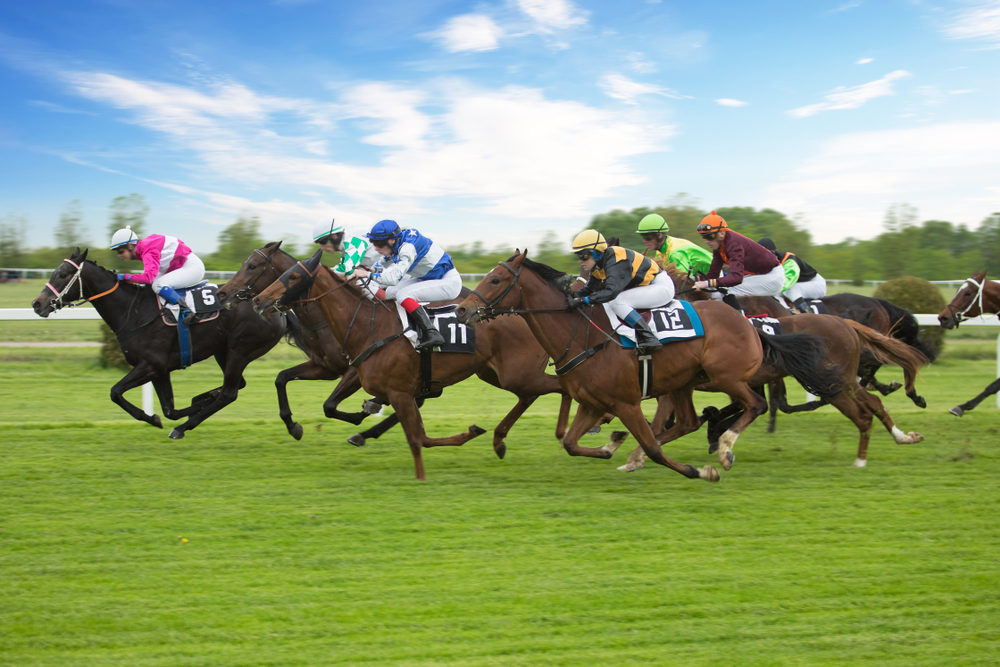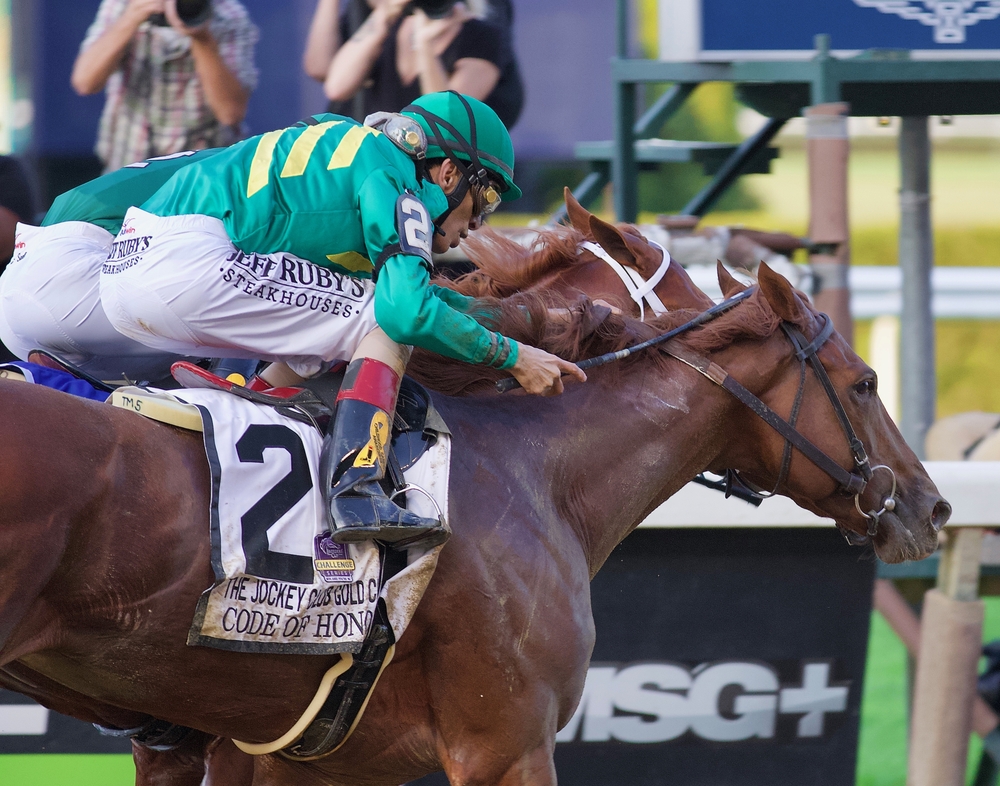Betting on tennis matches has become increasingly popular in recent years, with fans of the sport looking for new ways to engage with the game. One such way is by betting on the number of aces served in a match. This type of bet can add an extra layer of excitement to watching a tennis match, as it allows you to follow the performance of individual players more closely.
An ace is a serve that is not touched by the receiver, and it is one of the most important shots in tennis. Betting on the number of aces served in a match can be a great way to test your knowledge of the game and potentially make some money in the process. Of course, it is important to remember that betting always involves an element of risk, and you should never bet more than you can afford to lose.
If you are interested in betting on the number of aces served in a tennis match, there are a few things to keep in mind. Firstly, it is important to do your research and learn as much as you can about the players involved in the match. This will help you to make more informed betting decisions. Additionally, it is a good idea to start small and gradually increase your bets as you become more comfortable with the process. With a bit of luck and some careful planning, betting on the number of aces served in a tennis match can be a fun and potentially rewarding experience.
Understanding Tennis Scoring
Tennis scoring can be a bit confusing for beginners, but it’s actually quite simple once you get the hang of it. In tennis, a match is played between two players, and each player aims to win as many points, games, and sets as possible to win the match. Here’s a breakdown of the basic scoring system in tennis:
Points
In tennis, each point is worth a certain number of points, with the first point being worth 15, the second point being worth 30, the third point being worth 40, and the fourth point being worth the game. If both players are tied at 40 points, it’s called “deuce.” From there, the next player to win a point gets “advantage,” and if they win the next point, they win the game.
Games
A game is won by the first player to win four points and be ahead by at least two points. If the score is tied at 3-3, the next player to win two points wins the game. In a match, players must win at least six games to win a set.
Sets
A set is won by the first player to win six games and be ahead by at least two games. If the score is tied at 6-6, a tiebreaker is played to determine the winner of the set. In a match, players must win either two out of three sets or three out of five sets to win the match.
Aces
An ace is a serve that is not touched by the opponent and lands in the service box. The number of aces served in a tennis match can vary depending on the players’ form, the opponent’s ability to return serves, and other factors. However, it’s possible to bet on the total number of aces served in a match, either over or under a certain number.
Faults and Lets
If a serve lands outside the service box, it’s called a “fault,” and the server gets a second serve. If the second serve also lands outside the service box, it’s called a “double fault,” and the receiver wins the point. If a serve hits the net but lands in the service box, it’s called a “let,” and the server gets to serve again.
Conclusion
Understanding tennis scoring is essential if you want to bet on the number of aces served in a match. By knowing the basic rules and terms of tennis, you can make more informed bets and enjoy the game even more.
The Art of Serving in Tennis
Serving is one of the most important aspects of tennis, and it is an art that requires skill, precision, and control. A good serve can set the tone for the entire match, while a bad serve can give your opponent an easy point. In this section, we will explore the art of serving in tennis and what makes it so crucial to the game.
Tennis players have different serving styles that they use to gain an advantage over their opponents. For example, some players like Roger Federer and Novak Djokovic use a flat serve, which is a fast and direct serve that is difficult to return. Other players like Rafael Nadal and Iga Swiatek use a topspin serve, which adds spin to the ball, making it bounce higher and making it harder to return.
The surface of the court can also affect a player’s serving style. For example, on a clay court, players may use a kick serve, which is a type of topspin serve that bounces high and away from the opponent. On a hard court, players may use a slice serve, which is a type of serve that curves away from the opponent, making it difficult to return.
In professional tennis, players like John Isner, Ivo Karlovic, and Nicolas Mahut are known for their powerful serves, which often result in aces. An ace is a serve that is not touched by the opponent and results in a point for the server. These players can serve at speeds of over 140 mph, making it nearly impossible for their opponents to return the ball.
To become a good server, players need to practice their technique and develop control over their serve. They need to be able to place the ball accurately and vary the speed and spin of their serve to keep their opponents guessing. Players also need to be mentally strong and confident when serving, as the pressure of a crucial point can be overwhelming.
In conclusion, the art of serving in tennis is a crucial aspect of the game that requires skill, precision, and control. Players need to develop their own serving style, practice their technique, and be mentally strong and confident when serving. By mastering the art of serving, players can gain a significant advantage over their opponents and win more matches.
The Impact of Court Surface on Aces
The surface a tennis match is played on can have a significant impact on the number of aces served. Aces are more common on faster surfaces, such as hard courts, compared to slower surfaces like clay courts.
According to a study by the School of Physics at the Faculty of Science, the total number of aces served in all 127 matches at each event is higher at Wimbledon, which is played on grass, and least common at the French Open, which is played on clay. This reflects the relative speeds of the different court surfaces.
The logic behind this is that the faster the surface, the more favourable it is for the server. This is evident in the number of aces and breaks of serve. On a faster surface, the ball bounces higher and travels faster, making it more difficult for the receiver to return. Conversely, on a slower surface like clay, the ball bounces lower and travels slower, giving the receiver more time to return the ball.
It’s worth noting that the number of aces served can also depend on the player’s style of play and their individual strengths. For example, a player with a powerful serve may be able to serve more aces regardless of the court surface.
In summary, the court surface can have a significant impact on the number of aces served in a tennis match. Faster surfaces like hard courts tend to have more aces, while slower surfaces like clay courts tend to have fewer aces. However, other factors such as a player’s style of play can also affect the number of aces served.
The Role of Aces in Tennis Matches
Aces are an integral part of tennis matches and can have a significant impact on the outcome of a game. Aces occur when a player serves the ball and it lands in the service box untouched by the receiver, resulting in an immediate point for the server. Aces are a demonstration of a player’s serving ability and can help them gain control of the game.
Players who serve aces can gain an advantage over their opponents by putting them under pressure and forcing them to play defensively. Aces can also help players win games quickly and conserve energy for later stages of the match. However, serving too many aces can also be a disadvantage as it can result in a lack of rallies and rhythm, which can affect a player’s form.
Some of the greatest tennis players of all time, such as Roger Federer, Novak Djokovic, Rafael Nadal, and Serena Williams, have all recorded impressive numbers of aces throughout their careers. John Isner holds the record for the most aces served in a single Wimbledon match with 113 aces, while Ivo Karlovic holds the record for the most aces served in a single French Open match during 2009.
In tennis betting, aces can be used to predict the outcome of a match. Tennis bettors can place bets on the total number of aces served in a match, the number of aces served by a specific player, or the winner of a match based on their serving ability. Aces can also be used in spread betting, over/under betting, and futures betting.
In conclusion, aces play a vital role in tennis matches and can have a significant impact on the outcome of a game. They are a demonstration of a player’s serving ability and can help them gain control of the game. Tennis bettors can use aces to predict the outcome of a match and make informed betting decisions.
Betting on Tennis Matches
Tennis is a popular sport for betting, and it offers a wide range of betting options for tennis bettors. Whether you’re a seasoned tennis bettor or a newcomer to the sport, there are plenty of ways to bet on tennis matches. In this section, we’ll cover some of the most popular betting options for tennis matches.
Moneyline Betting
Moneyline betting is the most popular way to bet on tennis matches. With this type of bet, you simply choose the outright winner of a match. The favourite will have a negative sign (-) in front of their odds, while the underdog will have a positive sign (+). For example, Novak Djokovic might be listed at -200 to win a match, while his opponent might be listed at +150.
Spread Betting
Spread betting is another popular way to bet on tennis matches. With this type of bet, you bet on the margin of victory for the favourite. For example, if Novak Djokovic is listed at -5.5 games, he would need to win the match by six or more games for you to win your bet.
Over/Under Betting
Over/under betting is a type of bet where you bet on whether the total number of games played in a match will be over or under a certain number. For example, if the over/under for a match is set at 22.5 games, you would bet on whether the total number of games played will be over or under 22.5.
Set Betting
Set betting is a type of bet where you bet on the winner of a specific set in a match. For example, you might bet on Rafael Nadal to win the first set of a match against John Isner.
Prop Betting
Prop betting is a type of bet where you bet on specific outcomes within a match. For example, you might bet on the number of aces served by Ivo Karlovic in a match against Feliciano Lopez.
Live Betting
Live betting is a popular option for tennis bettors, as it allows you to bet on matches as they are happening. With live betting, you can bet on a wide range of outcomes throughout the match, including the winner of the next game, the winner of the next set, and the overall winner of the match.
Futures Betting
Futures betting is a type of bet where you bet on the outcome of a tournament before it begins. For example, you might bet on Daniil Medvedev to win the US Open before the tournament begins.
Betting Sites
There are many betting sites that offer tennis betting, including the ATP Tour’s official betting partner, Betway. Other popular betting sites for tennis include Bet365, William Hill, and Paddy Power.
Overall, tennis offers a wide range of betting options for tennis bettors, and with a little research and knowledge, you can turn a profit betting on professional tennis matches.
Frequently Asked Questions
What are the rules for betting on tennis matches?
When betting on tennis matches, it is important to understand the rules and regulations of the bookmaker you are using. Different bookmakers may have slightly different rules, so it is important to read through their terms and conditions carefully before placing a bet. Generally, bets on tennis matches are placed on the outcome of the match, the number of sets or games won by each player, and the number of aces served by each player.
How does Bet365 handle tennis player retirements in bets?
If a tennis player retires from a match, Bet365 will void any bets placed on the outcome of the match. However, bets placed on the number of sets or games won by each player and the number of aces served by each player will still stand, as long as the minimum number of sets or games required for the bet to be valid has been completed.
What happens to a bet if a tennis match is interrupted by rain?
If a tennis match is interrupted by rain and is unable to be completed within a certain timeframe, the bet will be voided and any stakes placed will be returned to the customer’s account. However, if the match is completed at a later date, any bets placed on the outcome of the match, the number of sets or games won by each player, and the number of aces served by each player will still stand.
What are the tennis rules for betting with Ladbrokes?
Ladbrokes offers a range of tennis betting options, including bets on the outcome of a match, the number of sets or games won by each player, and the number of aces served by each player. It is important to read through Ladbrokes’ terms and conditions carefully before placing a bet to ensure that you understand their rules and regulations.
Can you place bets on the number of aces served in a tennis match?
Yes, many bookmakers offer bets on the number of aces served by each player in a tennis match. This can be a fun way to add some excitement to the match and potentially win some money.
How many aces can a tennis player serve in a match?
The number of aces a tennis player can serve in a match can vary depending on a number of factors, including their skill level, the conditions of the court, and the quality of their opponent. Some players are known for their powerful serves and may be more likely to serve a higher number of aces, while others may rely more on their groundstrokes and have a lower number of aces.
What happens to my Tennis bet if the game is a walkover?
If a tennis match is declared a walkover, it means that one of the players or teams has withdrawn or been unable to participate before the match has started or has been completed. In such cases, the match is not played and is typically considered void or canceled by most sportsbooks and betting platforms.
What happens to your tennis bet in the event of a walkover can vary depending on the specific rules of the sportsbook or betting platform you placed your bet with. However, here are some common scenarios:
Full Refund: Many sportsbooks will consider a bet on a tennis match that ends in a walkover as void and will refund the bet amount to the bettor. Essentially, the bet is treated as if it never happened.
Bets Stand: Some sportsbooks might have specific rules that state that bets stand as long as one ball has been served in the match. This means that even if the match ends in a walkover after a minimal amount of play, the bets could be considered valid, and the outcome determined based on the partial play that took place.
Player Advancement: In some cases, if a player withdraws before the match but after the tournament has started, bets might still stand if the opponent advances to the next round. This scenario is less common and would depend on the specific sportsbook’s policies.
It’s crucial to always read and understand the terms and conditions of the sportsbook or betting platform where you placed your bet. These rules can vary significantly from one platform to another, so it’s essential to be aware of how they handle situations like walkovers. If you’re unsure about the specific rules, it’s a good idea to contact the customer support of the platform for clarification.





